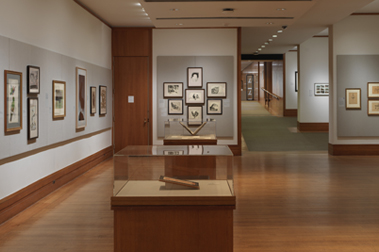Sketch Near Longparish
Sir Francis Seymour Haden British
Not on view
Seymour Haden was the unlikely combination of a surgeon and an etcher. Although he pursued a very successful medical career, he is mostly remembered for his etched work as well as for his writings on etching. He was one of a group of artists, including James McNeill Whistler (1834–1903) and Alphonse Legros (1837–1911), whose passionate interest in the medium led to the so-called etching revival, a period that lasted well into the twentieth century. The extolling of etching for its inherent spontaneous qualities reached its pinnacle during this time. While the line of the etching needle, Haden wrote, was "free, expressive, full of vivacity," that of the burin was "cold, constrained, uninteresting," and "without identity."
The river Test at Longparish; a quick sketch of a river scene with large grouping of trees and homes viewed from the far bank of the small river; pencil mark reducing the original plate mark area.
"The Test at Longparish, near Romsey.
State II (Hb). The plate reduced, thus removing most of the mezzotint."
[Source: Schneiderman, p. 403]
"Trial Proofs: (b) The plate is reduced to 7 1/8 in. w. , 3 6/8 in. h., thus removing the greater portion of the plate that was defaced by the mezzotint rocker."
[Source: Harrington, p. 116]
